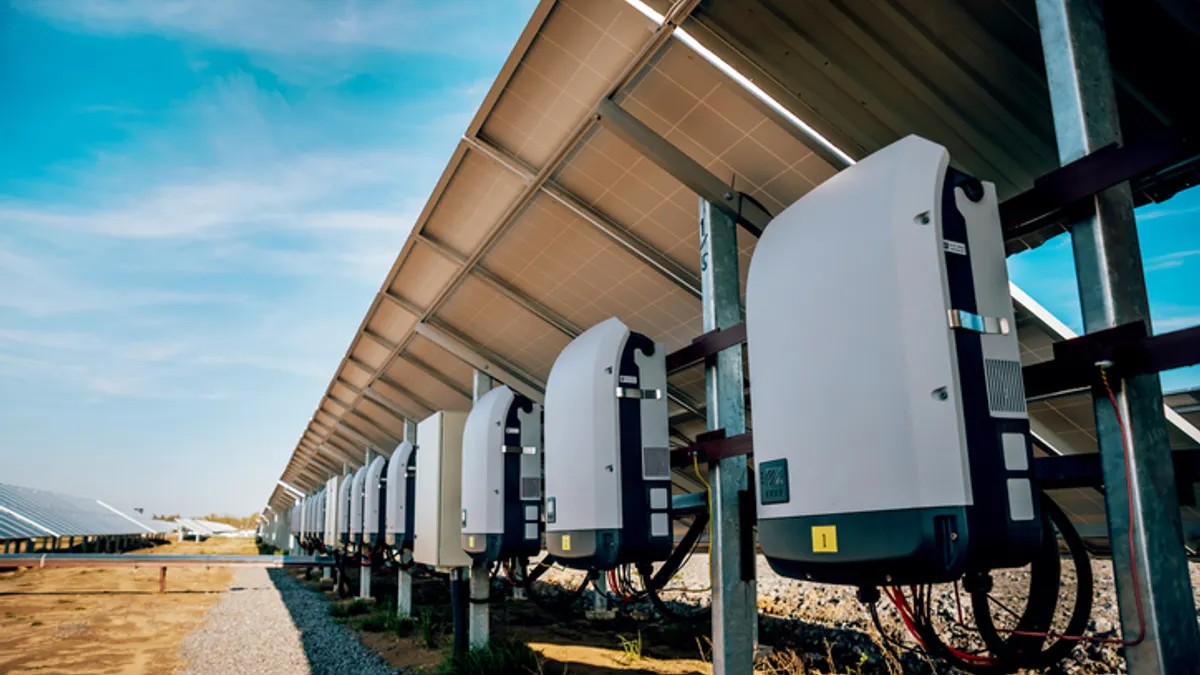Dive Brief:
- German energy storage company Younicos will provide a turnkey battery storage system to a solar array owned by OCI Solar, the company announced this week. The combined system will be the first utility-scale solar-plus-storage project in the state, according to the firms.
- Younicos will design, engineer and construct the planned 1 MW system, which it says will also be the first energy storage system in the state to utilize LG Chem batteries. It is Younicos' first project with OCI Solar in what they say will be a strategic partnership
- The project is the second recently announced in Texas from Younicos. In June, Duke Energy announced it had selected the company, along with Samsung SDI, to upgrade the nation's largest wind-integrated storage system in West Texas.
Dive Insight:
Texas utilities have unveiled other solar-plus-storage systems in the past, most notably in Oncor's innovative microgrid near Lancaster, which Utility Dive spotlighted earlier this year.
That solar-storage project, and others like it in the state, are too small to traditionally be considerd utility-scale (usually pegged at 1 MW or more). But Younicos' 1 MW battery would fit the bill as the first in the state, the San Antonio Express News reports.
“We are very pleased to expand our presence in our home market, and we congratulate OCI Solar Power as the first company to develop a grid-scale integrated solar/storage resource here," said Stephen L. Price, Youncios' chief revenue officer, in a statement.
Industry observers have expected the Texas energy storage market to take off for a while, especially following the publication of a report by Oncor and The Brattle Group, which showed that more than 5 GW of energy storage could be cost effective in Texas energy markets.
Utilities like Oncor, however, have found it difficult to capture the full value of energy storage. ERCOT market rules prevent T&D utilities from owning technologies that participate in competitive markets, like generation assets, meaning that those power companies can only deploy solar to assist with grid functions such as voltage compensation or reliability.
Third party power developers like OCI and Younicos, however, are not prohibited from building a solar-storage system that participates in competitive energy markets. The companies didn't release details on what grid functions the new solar-storage facility will be used for, but recent announcments could offer a clue.
Earlier this month, SolarCity and the Kauai Island Utility Cooperative (KIUC), a Hawaii power provider, signed a deal for what they say will be the nation's first fully-dispatchable solar-plus-storage system. The 52 MWh batteries in that system will "shave' the amount of conventional power generation needed to meet the evening peak, which lasts from 5 p.m. to 10 p.m.," according to KIUC.
While the Younicos system in Texas isn't billed as being fully-dispatchable, its batteries could allow some of the solar power generated to be fed back into the grid at a later time, enhancing its value proposition.
A company spokesman told the Express News that the specific grid uses for the storage facility will be dictated by its location on the grid, which is yet to be finalized. Younicos expects the facility to be operational in early 2016.












